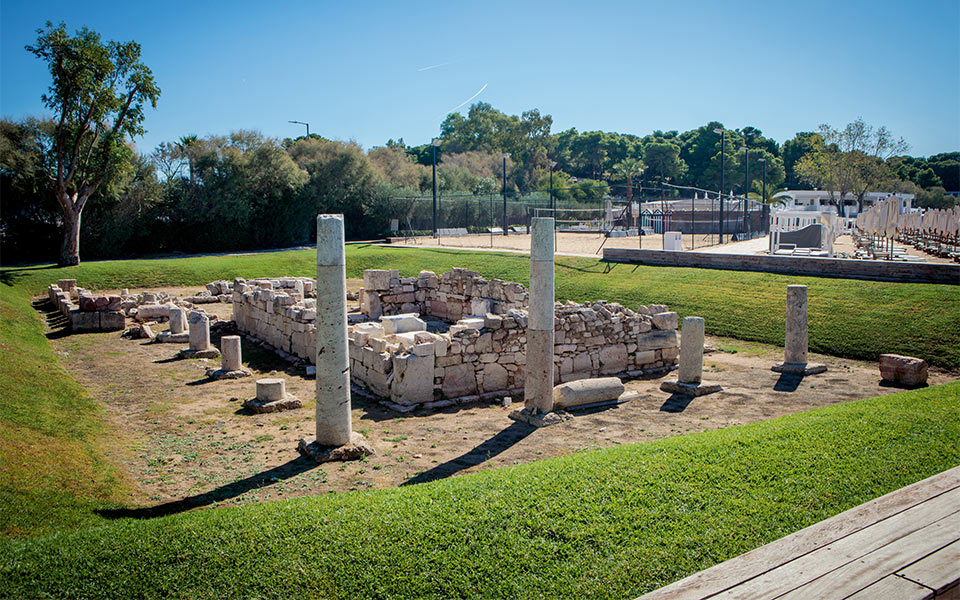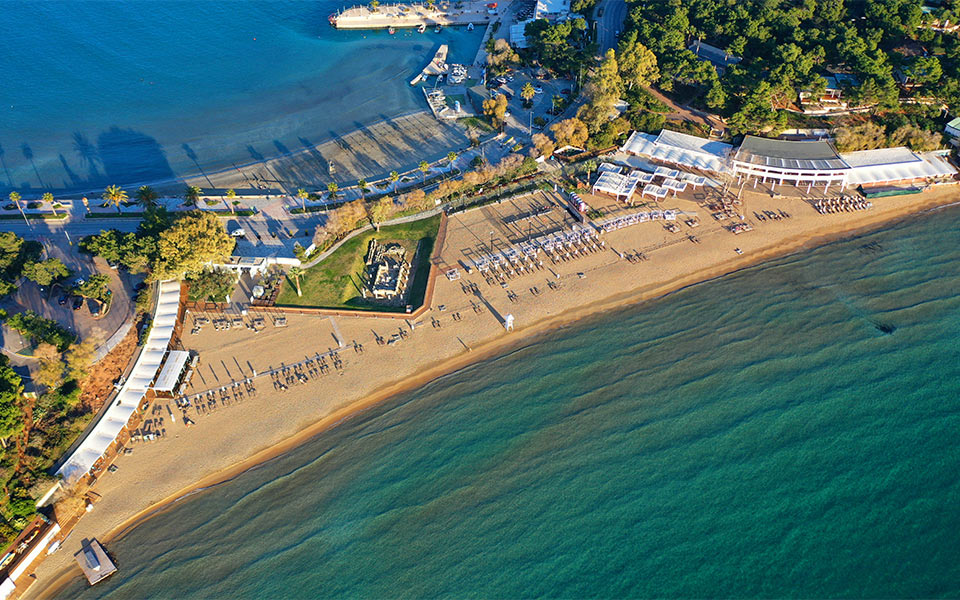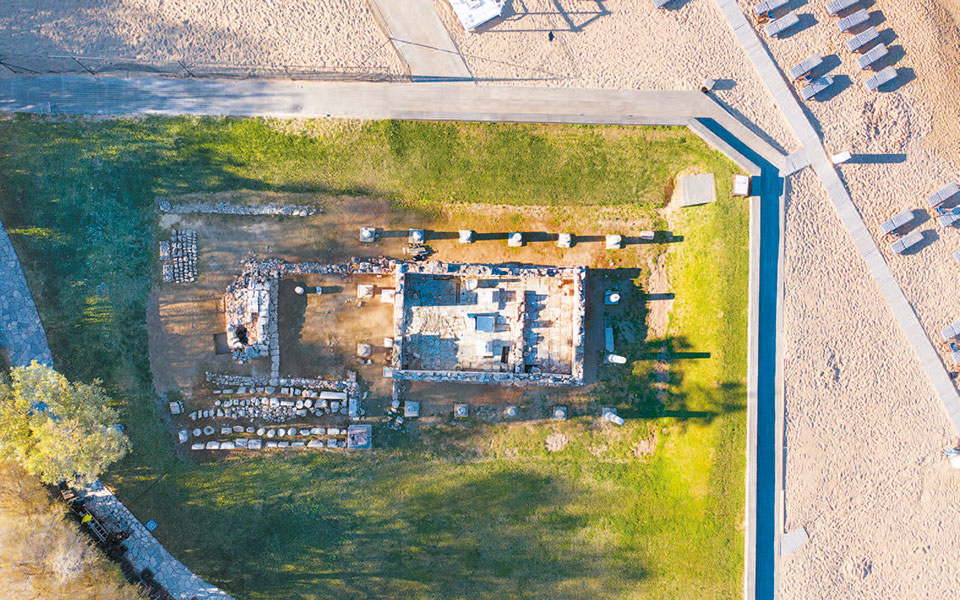I saw it for the first time through the glass window at the entrance of Astir Beach in Vouliagmeni. That was precisely the reason the window was placed there: for passers-by to admire the ancient temple from the sidewalk, and to discourage freeloaders from talking their way into the organized beach under the pretext of an archaeological visit.
The second time, I prepared my visit better, as everyone must these days if they don’t want to pay to enter the beach, whether visiting alone or in groups: I notified the people in charge at Astir Palace Vouliagmeni and one of the beach guards walked me to the sacred monument. The visit is worth the trouble, as you get to see the remains of the Temple of Apollo Zoster, just a few meters from the shore, which was built during the Archaic Period (in the 6th century BC) and was the most important sacred temple in the ancient Demos of Alon Aexonidon.
The temple’s main hall was a large rectangular room of approximately 10 meters in length; the foundations of the four walls have been preserved. The building rests on the sand where small plants grow between the three marble pedestals on which the statues of Apollo, Leto and Artemis were placed, the priest’s marble throne and the marble offering table.

© Shutterstock
The Discovery of the Temple
The temple of Apollo Zoster was discovered by accident in the beginning of the 20th century by children from the Vouliagmeni orphanage, who uncovered sections of walls and inscriptions. The inscriptions led to the identification of the place as sacred, and excavations began in 1926. Thanks to the excavation and the discovery of the temple, ancient sources were verified, specifically the ancient writers Stravonas and Pafsanias.
The latter even provided and interpretation for the epithet “Zoster” (which means “belt”); according to the myth, Leto was chased to this location by Hera – who was in a rage because she had found out that Leto was carrying Zeus’ twins – and felt that the time had come for her to give birth to Apollo and Artemis, so she untied her belt. The Apollo Zoster temple was named after Leto’s belt.
According to archaeologist Konstantinos Kourouniotis, however, Apollo’s correct initial surname is “Zostirios” (he who wears a war belt) and not “Zoster”, meaning the temple’s name did not have a local origin but referred to the god’s association with war. The Apollo that was worshiped here is the Apollo who has strapped on his war belt and ready for battle. Nevertheless, the appellative of the three worshiped deities must also be related to the region’s geomorphic features, specifically the narrow – belt-like – strip of land that connects the peninsula with the mainland.

© Shutterstock
The Future of the Monument
Visitors can read some of the above information on the bilingual informative placard located in front of the temple. The body in charge of the monument is the Antiquities Ephorate of West Attica, Piraeus and Islands; thanks to the drainage works carried out in 2011, the low-lying temple, which was sitting in at least 20 centimeters of water – “a swamp where frogs lived,” as the archaeologists told us – was drained.
Currently, following decisions taken in 2016-17, new studies are being completed for the restoration and maintenance of the monument, which are particularly challenging because of the environment in which the temple is located.
A separate entrance is being considered to enable access from the street – as opposed to through Astir Beach – so the monument can be made accessible during normal opening hours for archaeological sites. Additionally, a new fencing is planned ensuring its greater accessibility. According to the current planning, the Central Archaeological Council and Museums Council are due to weigh in on the matter this September.
Responsible for implementing the project is the company “Astir Palace Vouliagmeni S.A” which is working closely with the Ephorate, having signed a memorandum of cooperation. “We are in constant collaboration with the Ministry of Culture as regards to improving the temple’s visibility, as well as the protection and promotion of antiquities that are located in the area and have been placed under the care and protection of Astir,” the deputy director of development Konstantinos Mitsios told Kathimerini in an interview.
In 2013 the hill of the Vouliagmeni peninsula occupied by the Astir Palace resort was officially declared an archaeological site (Zone A); its archaeological interest was already known to experts. The site used to be an important religious center for all of the Attica region in antiquity, and recent renovation works carried out at the site revealed antiquities from Roman and Hellenistic times.
This article was first published in Greek at kathimerini.gr












